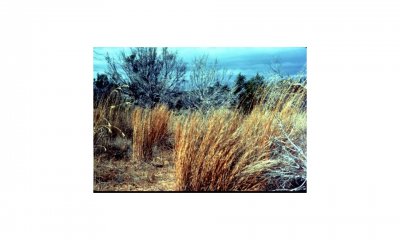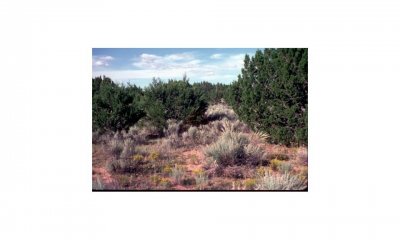
Deep Sand Savanna 13-16 P.Z.
Scenario model
Current ecosystem state
Select a state
Management practices/drivers
Select a transition or restoration pathway
- Transition T1A More details
- Restoration pathway R2A More details
- Transition T2A More details
- Transition T2A More details
- Restoration pathway R3B More details
- Restoration pathway R3A More details
-
No transition or restoration pathway between the selected states has been described
Target ecosystem state
Select a state
Description
The reference state consist of two community phases, 1.1 and 1.2, each being maintained by frequent fire (6 - 20 years) and weather fluctuations (drought and wet years).
Indicators: High perennial grass cover and production. Litter accumulation.
Feedbacks: Organic matter inputs allow for increased soil moisture, production, root turnover and litter increasing soil surface stability.
At-risk Community Phase: Either community phase is at risk when bare ground increases and organic matter inputs decline.
Submodel
Description
Juniper canopy cover controls the soil moisture, herbaceous production and organic matter inputs. Management practices applied to maintain current canopy cover and herbaceous production. Manipulation of brush species and prescribed fire and grazing management planned to maintain or improve warm season mid grass production.
Indicators: Juniper canopy cover>15%, bare ground > 35% <50%.
Feedbacks: Juniper use of moisture, decreasing herbaceous production, decreasing organic matter inputs.
At-risk Community Phase: Either community phase is at risk if juniper seedling increase and canopy cover increases.
Submodel
Description
Active wind and water erosion taking place.
Indicators: Juniper canopy closed, soil surface stability indicators <3.0, active wind and water erosion prevalent.
Feedbacks: Juniper use of all available moisture, eliminates organic matter inputs, decreases soil surface stability.
Submodel
Mechanism
The trigger for this transition is the elimination of fire and overgrazing causing increase juniper canopy. The threshold values are as follows:
Increasing bare ground > ??% and increase in juniper canopy cover to 15%.
Slow variables and triggers for this transition are the elimination of fire due to decrease in fine fuels. The increasing canopies of juniper restrict or limit sunlight and moisturecritical for herbaceous cover. The threshold values are: surface stability < 3.4, basal cover < 7%, jniper foliar cover > 24%, and juniper > than 4' tall.
Mechanism
Removal of juniper canopy cover to < 5% with minimal soil surface disturbance. Grazing management that increases herbaceous production and favors the establishment and growth of warm season tall and mid grasses is essential for success of this pathway.
Mechanism
The trigger for this transition is the increase in juniper seedling establishment and/or juniper canopy cover. This is caused by management actions that lead to decreased herbaceous production and decreased organic matter inputs into the soil. This can also be caused by lack of management actions that actively reduce juniper canopy cover. Threshold values for this transaction are: Bare ground > 50% and soil surface stability <3.0.
Mechanism
Slow variables and trigger for this transition are increase in juniper seedling establishment and juniper cover…caused by management actions that lead to decreased herbaceous production and decreased organic matter inputs…by lack of management actions that actively reduce juniper canopy cover…threshold values...surface soil stability <2.4, bare ground >40%, canopy gaps >30%, basal cover <4%.
Mechanism
Management and restoration planned must decrease juniper canopy to <5%...little or no surface disturbance, management actions must increase herbaceous production…allow for litter accumulation…improve organic matter inputs to stabilize soil surface.
Mechanism
Management and restoration practices planned must decrease juniper canopy to <5% with little or no surface disturbance, grazing must plan for increasing herbaceous production and allow for litter accumulation to improve organic matter inputs to stabilize soil surface.
Model keys
Briefcase
Add ecological sites and Major Land Resource Areas to your briefcase by clicking on the briefcase (![]() ) icon wherever it occurs. Drag and drop items to reorder. Cookies are used to store briefcase items between browsing sessions. Because of this, the number of items that can be added to your briefcase is limited, and briefcase items added on one device and browser cannot be accessed from another device or browser. Users who do not wish to place cookies on their devices should not use the briefcase tool. Briefcase cookies serve no other purpose than described here and are deleted whenever browsing history is cleared.
) icon wherever it occurs. Drag and drop items to reorder. Cookies are used to store briefcase items between browsing sessions. Because of this, the number of items that can be added to your briefcase is limited, and briefcase items added on one device and browser cannot be accessed from another device or browser. Users who do not wish to place cookies on their devices should not use the briefcase tool. Briefcase cookies serve no other purpose than described here and are deleted whenever browsing history is cleared.
Ecological sites
Major Land Resource Areas
The Ecosystem Dynamics Interpretive Tool is an information system framework developed by the USDA-ARS Jornada Experimental Range, USDA Natural Resources Conservation Service, and New Mexico State University.






